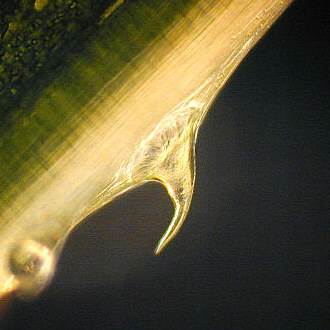 |
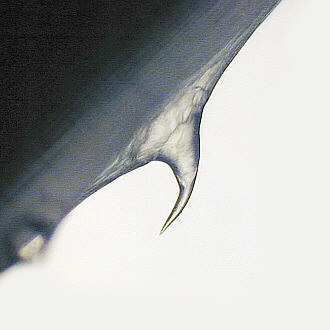 |
| Hooked on Cleavers |
| A brief
peep into the world of the cleavers and their tenacious clinging capacity
By Paul James (UK) |
Most of us find at some point in mid to late summer, small pea sized fluffy nodules clinging to our trousers, socks, or shoe laces, after walking through some undergrowth. The source of these is of course the cleaver (Galium aparine), also known as 'goosegrass', which is extremely common and fast growing in the UK, often causing much anxiety to gardeners. The name goosegrass has been adopted because it is in fact a favourite food of geese, and is fed to goslings just after hatching in some areas. This reinforces the simple fact, because of the hooks covering this plant, that the digestive system is rather more durable than we might have otherwise have assumed!The cleaver is prolific and can infiltrate hedges and small bushes with great rapidity and density, and anyone who has pulled the main stems away will at first assume that the plant has a sticky exterior. The long sinuous stems are about 2-3 mm thick, and of rectangular form.
The following photo's show the true nature of the 'stickiness' of the stems :-
 |
 |
Here, under darkfield and diffuse brightfield lighting ( X 80 achro.) a single hook attached to the stem wall shows the exact nature of its tenacious clinging ability. Under the 'scope the hooks which are responsible for the 'stickiness' are seen to be extremely well designed for the job in hand. It is however the shape and sharpness of the hooks which is truly amazing, and account for the success and therefore survival of this species.
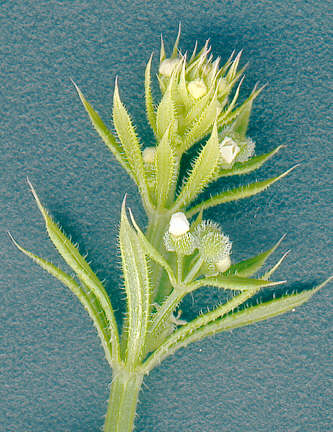 |
Above, the upper part of the plant showing flowers and fruit bodies developing. Note that everything apart from the flowers is covered in the hooks.
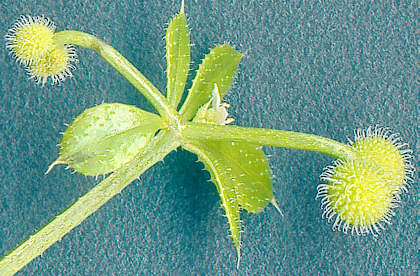 |
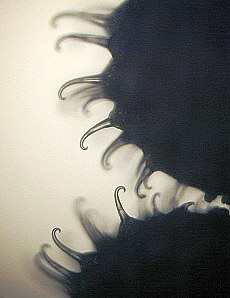 |
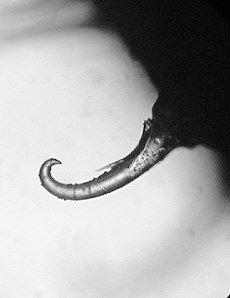 |
| True nature of 'stickiness' on
fruit bodies (x30) |
Hooks quite different to those
found on the stem (x150) |
The hooks of the cleaver vary slightly in shape depending where they develop from, and the longest appear to be on the fruit bodies which is not too surprising, as it is these that often end up being carried away on clothing and animal fur and hides. These fruit body hooks are quite different to the ones covering the stems, the former have very sharp points parallel to the stem , and the latter have distinctly rolled over points, which are not quite as acutely sharp.It might suggest that the hooks seen over the stems which cannot serve too effectively as a defence against foraging animals, and I wonder therefore if there purpose is to enable to plant to cling to other larger more robust plants so as to gain elevation and therefore more success at survival and fruit dispersal? The downward attitude of the hooks I think would prevent the stems from sliding down their host supporters.
The plant is certainly a survivor !
Macro ScanningThe photo's above showing the plant at macro magnifications ( X 2 - X 4 ) were taken using an Agfa E-50 document/neg scanner, using high dpi scans. The other photo's were captured by using Nikon Coolpix 800 and Olympus C830L digicams using a Zeiss Photomic 1.
| All comments welcomed to Paul James |
Please report any Web problems or
offer general comments to the
Micscape
Editor,
via the contact on current Micscape
Index.
Micscape is the on-line monthly magazine
of the Microscopy UK web
site at Microscopy-UK
WIDTH=1